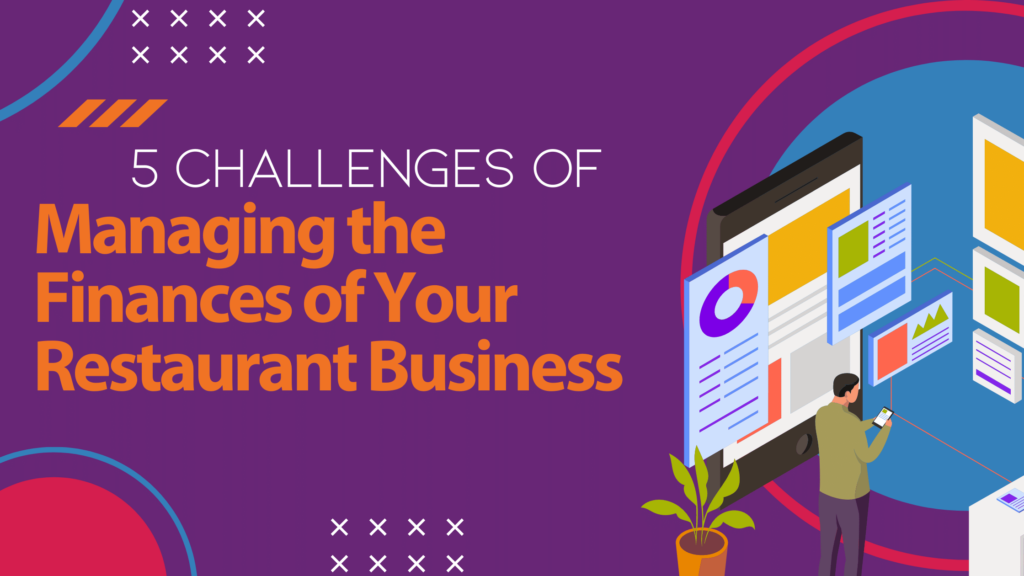Updated on: February 3, 2025
Many restaurants struggle to manage their finances. As a result, they end up spending more than they are profiting. This problem would continue to persist if you don’t invest in the right tools for your restaurant’s finance management. Worse, it can even lead to your business’ closure. Hence, you need software solutions that can help manage your restaurant’s finances and optimize operating costs for positive cash flow.
According to Finances Online, 82% of businesses are implementing software solutions in their accounting and finance management. These tools allow you to improve your workflows and embrace restaurant financial insights. You can also use it to determine common restaurant industry problems and solutions you can implement to overcome them.
Software solutions have a lot to offer to your restaurant business, both in its day-to-day operations and overarching financial goals. Most importantly, solutions regarding operational costs, such as inventory levels and financial reports, are essential to overcoming the challenges faced by restaurants nowadays. Here’s how they can help you.
1. Improve accounting
Restaurant accounting is a meticulous process. You need to make sure that you input accurate restaurant financial information in all your ledgers and books. Keep and report financial statements and even balance sheets if you have them. A single miscalculation or error in your data entry can have severe consequences on your restaurant’s finances, which can affect your lines of credit, profit margins, and financial success.
Many restaurant owners put off their accounting to the last minute, with a rudimentary restaurant balance sheet that makes tracking your operating expenses and financial statements difficult and stressful. This is highly understandable: after all, there are a lot of things to do when running a restaurant, and accounting is one of the most tedious and intimidating tasks on the roster, with discouraging cash flow statements threatening to dampen the drive to do all the work to make it a profitable restaurant. So instead of doing it manually, you can use software solutions to automate your accounting and bookkeeping process, tracking unexpected expenses, prime costs, loan payments, daily sales, sales over a different period of time, and other variable costs to help you better gauge your financial success. This way, you have one less thing to worry about and possibly a break-even point to shoot for in your financial planning.
Solutions like accounting software or finance management software can automatically keep track of your cash flow. It updates your books and ledgers to ensure that you have accurate figures of how much money goes in and out of your restaurant. It can also manage your payroll, taxes, and tip handling. On the other hand, restaurant software can also keep track of your restaurant’s inventory and orders to make sure that everything adds up at the end of every accounting period. These financial metrics are invaluable come tax season but can also see where you can open up room for investing in marketing strategies that will boost your long-term success.
2. Manage expenses
One of the common problems in the food service industry is high expenses. Restaurants usually operate on thin profit margins due to food costs, beverage costs, intensive labor, and other operational expenses and normal restaurant costs. Failure to keep track of your expenses can lead to spending more than you should. Hence, you need to always monitor your expenses and profits so that you can adjust accordingly. You do what you have to do, but cash outflows affect financial planning, no matter how necessary. Prepare a loss statement, assess food cost percentages, keep up with credit card fees and dues, and mind the prime costs. Every bit counts!
Software solutions can help you with expense management. For instance, it can keep an eye on your inventory to make sure that you don’t end up ordering more supplies. You can also use it to determine areas in your operations where you can reduce costs. Thus, you can save up on money by changing brands for your ingredients, cutting down on labor costs, raising menu prices, or reducing food portions.
3. Calculate profitability
Finding the right price for the food item on your menu can be tricky. Too high and customers won’t be willing to pay for it. But too low, on the other hand, can mean less or no profit at all. Some restaurant owners end up doing a trial-and-error method to determine the best prices for their food and services. However, this can be a costly process in the long run. Instead of doing it manually, use software solutions to calculate the profitability of your dishes.
You can use restaurant software to perform pre-costing and determine the cost of producing every item on your menu under varying conditions. This allows you to fully maximize potential profit and optimize costs in the process.Software solutions also allow you to leverage data and analytics to better understand restaurant profitability factors . It lets you identify the latest trends in the market, food prices, common customer behaviors, and your competitors’ strategies which you can use to boost your restaurant’s profitability.
4. Forecast demand
Avoiding stock wastage is a common challenge for many restaurants. Some overestimate customer demand so they end up overstocking ingredients and supplies. Unfortunately, restaurant inventories have a shorter shelf-life compared to inventories of other businesses. Hence, restaurant owners must deal with spoilage and wastage.
You can avoid this by improving your inventory management and demand forecasting. Software solutions like SynergySuite can provide you with a comprehensive and accurate view of your stock levels. At the same time, it can predict potential demand for your products so that you can plan your stocks accordingly. Now powered with machine learning, our Suggestive Ordering tool can help you forecast demand even more accurately.
5. Boost transparency
Finance management encompasses many other aspects of your restaurant’s operation. From marketing, managing supplies and staff, and preparing food, you have to keep track of how much each process costs you. However, this can be difficult especially if your financial data comes from different sources.
Centralize all your financial data using software solutions like restaurant software, accounting software, ERP system, or finance management software. You can also use collaboration platforms like monday.com for an all-in-one digital workspace. It allows you to sync all information about your restaurant in a single, unified platform, making it easier to leverage data for data-driven decisions.
A better way to manage restaurant finances
In this digital age, investing in software solutions for your restaurant balance sheets is a must if you want to remain relevant and competitive in the market, especially enough to be a successful restaurant. Level up the way you handle your restaurant’s financial success by investing in the best restaurant software for your profitable business.






